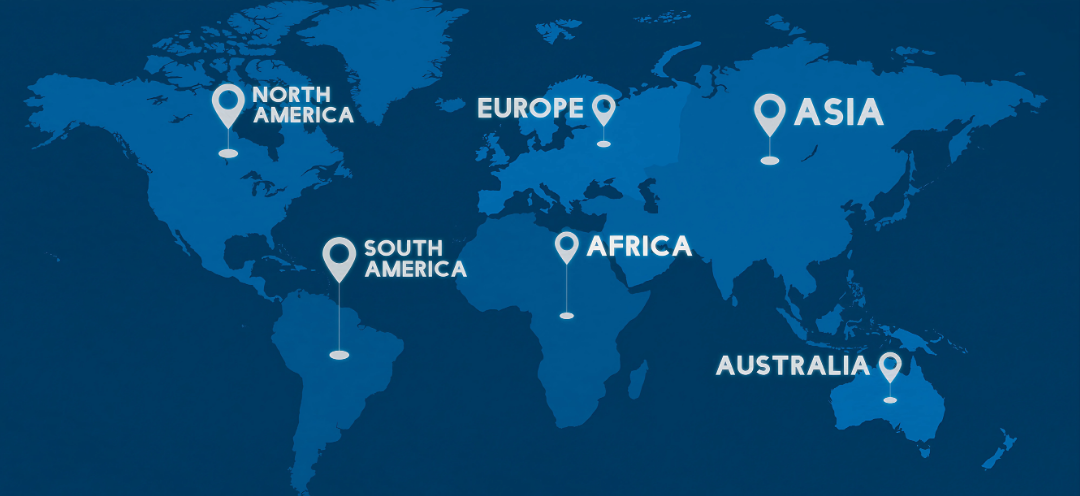Choosing the right development model—nearshoring, offshoring, or local development—can make or break your project's success. In this deep dive, we explore the advantages and challenges of each approach, helping you determine the best fit for your budget, project scope, and long-term goals. Whether you're scaling a tech startup, launching an MVP, or optimizing an enterprise solution, this guide provides expert insights to help you make an informed decision.

On this page
1. The Deal Breakers
2. Know What You Want and What You Need
3. How Much Time Do You Have?
I won’t tell you when I graduated from MIT or when I kicked off my career working at Uber’s first offices in San Francisco, or I’ll never work in this industry again. But I have been around long enough to be sure of one thing: what’s old is new again, and trends in technology development come and go. Remember when no one was going to ever use relational databases ever again? When everyone was going to work from home? Or live in the metaverse? If you want to avoid the pitfalls of being a follower, the first question to ask is “what are you trying to accomplish” not “what is everyone else doing”.
The one constant I’ve found is that companies chasing the latest fad will never have great outcomes - nowhere more so than in the decision about where to source software teams.
At Valere, we offer a range of solutions in multiple countries and time zones, and our crucial Discovery planning process is meant for companies to understand the right fit not just for the product you’re building but the kind of team and culture you want to create for long-term success.
Video conferencing has been around since it was invented at Stanford in 1968, and IBM built a smartphone in 1992 (code named “Sweetspot”). But when the internet first made remote collaboration possible in the mid 90s and early 2000s, the clear benefits in cost and relative expertise led to a boom in remote development teams. The industry really took off with advent of easy-to-use instant messaging like Slack and the widespread adoption of cheaper Android/Huawei phones, and the project management revolution of the 2000s (Asana, Atlasian) is still pushing the frontier of how we collaborate both at medium- (riding the bus into Cupertino from San Francisco, or just staying in your pandemic hideaway in Boise) and long-distances.
In countries like India and Croatia there are now firms with decades of experience helping American or European companies build world-class software, and this model has only gotten more mature over time. However, it’s not for everyone - I don’t need to tell you about the obvious challenges when working across time zones, or coordinating with teams with different levels of English. So the pendulum has swung back - from “offshoring” to “nearshoring” and to a hybrid approach with (more expensive) developers and product people complementing partial remote teams. In the meantime, technology and tooling (in project management, automatic translation, and AI-driven collaboration) has only made it easier to work with teams at a distance. There’s now a cottage industry of reports and consulting identifying underlying trends with eerie statistical specificity, and it should be easy to choose what’s right for you, right?
In my mind this narrative elides the actual issue. Companies all have different ways of working and different needs, strengths and weak spots, and not taking the time up front to understand how to collaborate will doom even the past laid plans. On the flip side, companies should evaluate whether any outsourcing agency, regardless of location, has addressed the potential drawbacks and is in a position to take advantage of the clear advantages of all three approaches to work. We pride ourselves at Valere as being somewhat reluctant suitors - we need to get to know you before we can be sure it’s the right fit, and we will suggest which of our teams is most likely to be successful, setting aside all ego or internal politics.
To make things personal, I’ve worked on both sides of the aisle - as part of large multinational teams at Uber and Apple, as a manager for teams in Latin America hiring the right internal teams, and as Managing Director at Valere selling near-shore solutions to US-based companies. In my mind, the questions to ask before tying the knot are, in rough order of importance:

MVP or not to MVP? That is the question. This is related to my earlier point about the product to be delivered, but it’s important to keep in mind whether you have a fast-approaching, hard deadline or if you want to put more time into a close collaboration for a robust complete product that can be maintained with a local/remote collaboration over time. The key issue here is risk mitigation - it may simply take time to create a functioning asynchronous development flow for a fast turnaround MVP, even with advances in automated testing, so I recommend adding 30-40% buffer to your worst-case scenario if you have to deliver something functional at a given time, and considering whether you can afford any slippage.
On the other hand, if you are planning on creating a production-ready platform on the first pass and are comfortable with a more flexible deadline or retainer model, keep in mind questions related to monitoring and alerting: will US based teams be watching Grafana or DataDog dashboards while your team in India sleeps? Who is responsible in the event of downtime? Are CI pipelines blocked by manual QA steps that will prevent a local developer from stepping in the case of an emergency?
To summarize, probably the most important questions are ones where you look inward. Where can you afford to take risks? Where are the upsides the most interesting? What kind of company do you want to be? We’re here to help you figure it out.
Share